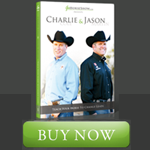Due to the economy and the current struggle of some APHA local clubs to remain profitable, many paint associations such as Missouri, Texas, and Tennessee have decided to combine their youth classes (13 & Under and 14-18) in order to have larger classes and draw more competitors. There is a huge debate currently going on among many exhibitors who feel that this is a great idea versus others that think it intimidates the young and new exhibitors to APHA. The Michigan Paint Horse Association is one of the clubs that is reluctant to combine the age groups and still has their youth split according to age.
Currently in APHA, show management is allowed to combine age groups to make all age classes before a show begins if it is agreed upon by the show committee. If youth, amateur, or open age groups (horses or people) are split, exhibitors are always free to request that any age group for any class in a category (youth, am or open) is combined. However, if one person objects to the potential combination, the age groups for that particular class at that particular show cannot be combined. If one age group of a category is less than one point, however, (like 2 people in Masters Amateur), show management can make the decision to combine the Masters with the Classic Amateur to make it a point earning class no matter if there is an objection from an exhibitor or not.
GoHorseShow.com decided to ask various people in the Paint industry what they think about this current trend of having all age classes. We definitely had a variety of opinions!
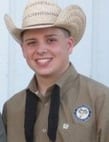 APHA Youth Exhibitor Austin Gooding--There is definitely a time and place to split classes. The problem lies within the smaller shows not recognizing until it’s too late that they don’t have the numbers to justify splitting the classes.
APHA Youth Exhibitor Austin Gooding--There is definitely a time and place to split classes. The problem lies within the smaller shows not recognizing until it’s too late that they don’t have the numbers to justify splitting the classes.
There are several examples of clubs doing this, that would back up my point. The Tennessee, Missouri, and Texas clubs are seeing great youth numbers because of this. On the flip side of this was a situation at Tulsa where the Amateur was split and there was only four horses in some of the Masters Amateur classes and one person would not let them combine–because of that there is a good chance these other three exhibitors probably won’t go back which could have a trickle down effect on the whole show. My mom and dad who judge a lot see this quite often where there will be 7 in one amateur division and 5 or so in the other, and they won’t combine. These are not numbers which are going to attract growth when people are analyzing where they are going to go show.
One last positive is; exhibitors who live in areas where they don’t split their classes have the opportunity to haul for APHA year end titles without having to travel all across the country to do it which is huge with today’s economy and rising fuel prices.
 Michigan APHA Amateur Nichole Freitag— I am not an advocate for the youth classes being combined for many reasons but mostly I do not believe that this will benefit our youngest members. I know that there is a novice program in place and that it is all ages but the older kids usually win that. While this helps the 13 and under gain the necessary experience to show against the older kids, once they are out of Novice they move right on to 18 & under? When do the 13 & under get their time to win the year ends, high points and build that necessary self-esteem you can only get from doing well in the show pen on your own level? Yes it makes them better, but do they stay involved long enough to get to that point? In my opinion an all ages youth class will discourage many families from being a part of our organization long term, along with creating safety hazards.
Michigan APHA Amateur Nichole Freitag— I am not an advocate for the youth classes being combined for many reasons but mostly I do not believe that this will benefit our youngest members. I know that there is a novice program in place and that it is all ages but the older kids usually win that. While this helps the 13 and under gain the necessary experience to show against the older kids, once they are out of Novice they move right on to 18 & under? When do the 13 & under get their time to win the year ends, high points and build that necessary self-esteem you can only get from doing well in the show pen on your own level? Yes it makes them better, but do they stay involved long enough to get to that point? In my opinion an all ages youth class will discourage many families from being a part of our organization long term, along with creating safety hazards.
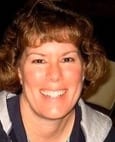 APHA Horse Show Mom Mary Malsch--It’s
APHA Horse Show Mom Mary Malsch--It’s
a story of Old School vs. New School…The history here is that 8-10
years ago when the economy was booming many clubs had lots of exhibitors
and age division splits were a good thing for both youth and amateurs.
In the last 5 years or so, many clubs started to struggle. Several clubs
in the nation including Missouri made local club decisions and made the
difficult decision to make their youth classes all 18 & under. Just
recently Texas – the largest association in the country made a decision
to offer 18 & under at a number of their shows this season. The
last several seasons, many of the top kids in the county had to haul
outside of Texas because the shows were small. Now that situation has
turned itself around in just two very successful shows in Waco this
year. In February, some of the top kids in the country came from all
over to a show that would not have ever attended last year because this
year it was 18 & under. So the great debate is over what each club
should do locally. Since our trainer and horse live in Missouri we show
there. There is no way Madison would have won the #1 title if it had not
been for showing in 18 & under classes. A 3rd place in a full point
class is way better than a 1st place in a 2 point class any day of the
week when you are trying to gather usable judges.
 AQHA Select and APHA Masters Exhibitor Susan Wilson–I think that there is an answer in the middle. At big shows (World shows or AQHA Congress or Redbud or Sun Circuit for example) where there will be enough entries to make full point classes for 13 & under, 14-18, young amateur and older amateur (different age splits in APHA and AQHA) then there should be separate classes. At smaller and/or regional type shows, the youth and/or the amateurs could all show together and then there is the chance for everyone to get points. But, I think the year end awards and the specific show high points could stay split up — meaning if you showed as a youth in an all ages youth class, your points would go towards your 13 & under or 14-18 awards. It doesn’t have to be an all or nothing solution in my view. As an older amateur exhibitor, I have no issue with showing against any amateur of any age. If I do well, then, my points go towards my older division awards. In this way show management in various parts of the country can tailor whether or not to hold an all age youth and amateur classes or to split them up by age depending upon how they need to serve the customers coming to their shows in that region. There is no “one size fits all” solution in my opinion.
AQHA Select and APHA Masters Exhibitor Susan Wilson–I think that there is an answer in the middle. At big shows (World shows or AQHA Congress or Redbud or Sun Circuit for example) where there will be enough entries to make full point classes for 13 & under, 14-18, young amateur and older amateur (different age splits in APHA and AQHA) then there should be separate classes. At smaller and/or regional type shows, the youth and/or the amateurs could all show together and then there is the chance for everyone to get points. But, I think the year end awards and the specific show high points could stay split up — meaning if you showed as a youth in an all ages youth class, your points would go towards your 13 & under or 14-18 awards. It doesn’t have to be an all or nothing solution in my view. As an older amateur exhibitor, I have no issue with showing against any amateur of any age. If I do well, then, my points go towards my older division awards. In this way show management in various parts of the country can tailor whether or not to hold an all age youth and amateur classes or to split them up by age depending upon how they need to serve the customers coming to their shows in that region. There is no “one size fits all” solution in my opinion.
 APHA Amateur Whitney Doubleday–Personally, I think combining age groups, especially the youth and the amateur, is a great idea. With the economy today, there are much fewer entries than there has been in the past. Because of this, it is much harder to find big numbers and tougher competition, and clubs are losing money.
APHA Amateur Whitney Doubleday–Personally, I think combining age groups, especially the youth and the amateur, is a great idea. With the economy today, there are much fewer entries than there has been in the past. Because of this, it is much harder to find big numbers and tougher competition, and clubs are losing money.
By combining age groups, it encourages so many more people to come to a particular show because larger numbers are almost always guaranteed than at a show were the age groups are split. This makes these combined shows much more attractive to people who might not have thought about attending them before they were combined. So, the numbers go up and clubs are able make more money and improve their shows and therefore, APHA itself.
Two years ago, I went to a show in Iowa for schooling and prep before the Oklahoma City Holiday Classic. It was extremely small. Both 14-18 and 13 & under western pleasure classes were only one point. Last year, I went again because they decided to combine it, and there was over 20 in the youth western pleasure which was great! And because people knew that show was going to be combined, people came from all over. People hauled to Iowa from all over (Missouri, Texas, New York…). It was awesome.
Now that I am an amateur, I have the same exact feelings. Combining encourages big numbers and competition, and it allows the clubs to make more money. Personally, I think that being 3rd out of 21 great horses is a much bigger accomplishment than being 1st out of 7 good or mediocre horses. The more the merrier.
 APHA Trainer Becky George— I support the all age because I think right now the paint breed is not big enough to have split age group. The biggest complaint is that the 13 and under can’t compete but that is why we have novice youth classes. At all the shows I’ve been to with all age, there have been several 13 and Under that placed very well. I think in today’s economy people want to have the opportunity for points when they spend so much money to get to the shows and with split age groups that doesn’t happen. As far as the Amateur, I think we need to go back to all age for same reason to make points available. You just see too many horse shows with 7 in young age group and 8 in older group–when combined could have been a nice class. They can request to combine that is the rule but people always object so it never happens.
APHA Trainer Becky George— I support the all age because I think right now the paint breed is not big enough to have split age group. The biggest complaint is that the 13 and under can’t compete but that is why we have novice youth classes. At all the shows I’ve been to with all age, there have been several 13 and Under that placed very well. I think in today’s economy people want to have the opportunity for points when they spend so much money to get to the shows and with split age groups that doesn’t happen. As far as the Amateur, I think we need to go back to all age for same reason to make points available. You just see too many horse shows with 7 in young age group and 8 in older group–when combined could have been a nice class. They can request to combine that is the rule but people always object so it never happens.
 APHA Youth Exhibitor Anne-Marie Fortenberry–I prefer combined classes.. Reason being is it just makes the classes bigger with more points. I always loved combining with the 14-18 because showing with them always made me take a step back and see what I could do to improve myself. You have to show with the best to become the best. But I can also see where some kids/parents/trainers wouldn’t want to combine the youth classes. I’ve never been to a Michigan show, but I love the Missouri shows that are combined. It’s so much fun competing with different people!
APHA Youth Exhibitor Anne-Marie Fortenberry–I prefer combined classes.. Reason being is it just makes the classes bigger with more points. I always loved combining with the 14-18 because showing with them always made me take a step back and see what I could do to improve myself. You have to show with the best to become the best. But I can also see where some kids/parents/trainers wouldn’t want to combine the youth classes. I’ve never been to a Michigan show, but I love the Missouri shows that are combined. It’s so much fun competing with different people!
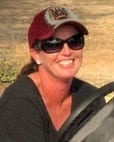 APHA Trainer Julie Kennedy–Our APHA youth classes are big enough to split and the little kids are more comfortable not having to show against the older ones. Even if they are novices, they will nearly always cross enter the 13 and under. They may be hesitant to show in the all age class if its full of older kids. I personally like the classes to be split. For the amateurs, if the show is big enough here in South Carolina, we split Showmanship but that’s the only class. I can see where at the world show it’s nice to have the split, but not always feasible at the weekend shows. The largest group of show ring newcomers in this area are novices and amateurs over 40. If they get to the world show level, they would be much more comfortable showing with their peers rather than showing with the 19-20 yr olds that have just finished a successful youth career.
APHA Trainer Julie Kennedy–Our APHA youth classes are big enough to split and the little kids are more comfortable not having to show against the older ones. Even if they are novices, they will nearly always cross enter the 13 and under. They may be hesitant to show in the all age class if its full of older kids. I personally like the classes to be split. For the amateurs, if the show is big enough here in South Carolina, we split Showmanship but that’s the only class. I can see where at the world show it’s nice to have the split, but not always feasible at the weekend shows. The largest group of show ring newcomers in this area are novices and amateurs over 40. If they get to the world show level, they would be much more comfortable showing with their peers rather than showing with the 19-20 yr olds that have just finished a successful youth career.
 APHA Trainer Amanda Ringer of Fennville, Michigan–In APHA, it is club that decides how the class is held. Example is Missouri Paint Horse Club holds an 18 & Under youth division. Now Michigan, where I live has a 13& under also a 14-18 division. Myself and a few other trainers around here have tried to convince both Michigan clubs to combine the youth into 18& under and the Amateur into all age. Myself, I do not feel that the economy supports having so many divisions right now.
APHA Trainer Amanda Ringer of Fennville, Michigan–In APHA, it is club that decides how the class is held. Example is Missouri Paint Horse Club holds an 18 & Under youth division. Now Michigan, where I live has a 13& under also a 14-18 division. Myself and a few other trainers around here have tried to convince both Michigan clubs to combine the youth into 18& under and the Amateur into all age. Myself, I do not feel that the economy supports having so many divisions right now.
For example, I have a 14-18 rider who we took to every Michigan paint horse show last year and multiple times she left the show early due to there only being 3 or 4 in a class. It was simply not worth her time to show for 1 point. At every one of these shows, we asked to combine it to a all age for youth. It was the show mangement who put a stop to it, because one person would object (although majority of the youth would want to combine).
We have also heard alot of flack about a 13 and under can not compete with the 14-18 or don’t feel confident enough to show against them. I do not believe this for one minute. My 13 and unders are more than willing to show against the 14-18. They feel like it is better to get a 3 out of 20 than to win a class out of 6. We went to more than enough shows last year where if the youth was combined that we would ‘ve had full pointed youth classes. If exhibitors are looking at shows, they are going to go the shows where there are more numbers to get a bang for their buck. I still think that APHA should keep national points different but the way the economy is now, I don’t see how people can think showing against 3 people is doing any of us any good.
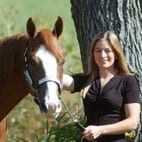 APHA Amateur Laura Scooter Johnson Carnevale–I just have some concerns that a lot of people seem to be overlooking. My main concern is for the younger 13 & under kids that may not be as mentally prepared. When making this decision, the 13 & under group needs to be looked at as a whole. Many are referencing the superstars of the division that are competitive in the 18 & under. What about your average 13 & under that is not hauling to all of the major shows with a top trainer? We need to encourage new growth. I don’t know if a 12 year-old exhibitor thinking about showing APHA will find it very enticing to show against 18 year-olds. No matter how driven the younger kids are, it’s still tough to look as confident and poised as the older, more polished youth. I’d like to hear the opinions of the average youth kids showing, and by average, I mean those that are not hauling with top trainers. I feel that we need to listen to the kids at the local level. I think that is where you are going to see the most potential for growth.
APHA Amateur Laura Scooter Johnson Carnevale–I just have some concerns that a lot of people seem to be overlooking. My main concern is for the younger 13 & under kids that may not be as mentally prepared. When making this decision, the 13 & under group needs to be looked at as a whole. Many are referencing the superstars of the division that are competitive in the 18 & under. What about your average 13 & under that is not hauling to all of the major shows with a top trainer? We need to encourage new growth. I don’t know if a 12 year-old exhibitor thinking about showing APHA will find it very enticing to show against 18 year-olds. No matter how driven the younger kids are, it’s still tough to look as confident and poised as the older, more polished youth. I’d like to hear the opinions of the average youth kids showing, and by average, I mean those that are not hauling with top trainers. I feel that we need to listen to the kids at the local level. I think that is where you are going to see the most potential for growth.
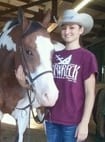 APHA 14-18 Youth Peyton Weldon–I love the idea of combining the amateur and youth. When I was seven, I won a championship at the world show in the Two Year-old geldings. If I would have worried about the age of the other people and chose to not enter the pen, I would have missed an amazing opportunity. I’ve been to two shows so far where it has been combined and have earned many points. In the equitation, I won 23 points because of all the kids in the class. I didn’t find any of the kids disappointed or upset because they did not place high enough. Some of the younger kids beat the older kids in many classes. I have talked to several people about this and found that everyone liked the idea. They also mentioned they never earned this many points at one show when it wasn’t combined. All of their comments were very positive about this idea and they all wanted to combine the youth and Amateur.
APHA 14-18 Youth Peyton Weldon–I love the idea of combining the amateur and youth. When I was seven, I won a championship at the world show in the Two Year-old geldings. If I would have worried about the age of the other people and chose to not enter the pen, I would have missed an amazing opportunity. I’ve been to two shows so far where it has been combined and have earned many points. In the equitation, I won 23 points because of all the kids in the class. I didn’t find any of the kids disappointed or upset because they did not place high enough. Some of the younger kids beat the older kids in many classes. I have talked to several people about this and found that everyone liked the idea. They also mentioned they never earned this many points at one show when it wasn’t combined. All of their comments were very positive about this idea and they all wanted to combine the youth and Amateur.
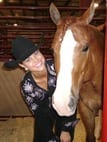 19 Year-Old First Year APHA Amateur Kaitie Kemper–Personally, I prefer the combined youth and amateur classes over the ones that are separated into age groups. First of all, when I was a 13 and Under rider, I enjoyed showing against the older youth. It motivated me to do the best that I possibly could, and it was also a great learning experience. When I had to enter an 18 and Under youth class when I was one of the younger kids and I didn’t place how I would have liked to, I learned to watch the youth that were placing in the top two or three. Then, I would go home and work on the elements, and try to imitate the way they showed and performed manuevers. It made me a better rider and showman, and I believe it will have the same effect for the grand majority of the youth kids today.
19 Year-Old First Year APHA Amateur Kaitie Kemper–Personally, I prefer the combined youth and amateur classes over the ones that are separated into age groups. First of all, when I was a 13 and Under rider, I enjoyed showing against the older youth. It motivated me to do the best that I possibly could, and it was also a great learning experience. When I had to enter an 18 and Under youth class when I was one of the younger kids and I didn’t place how I would have liked to, I learned to watch the youth that were placing in the top two or three. Then, I would go home and work on the elements, and try to imitate the way they showed and performed manuevers. It made me a better rider and showman, and I believe it will have the same effect for the grand majority of the youth kids today.
Also, with these larger class sizes that draw youth from across the country, the 18 and Under classes promote friendship and networking. I have been fortunate enough to meet so many people from across the country at shows with combined youth classes. It is a great way to promote the social aspect of the association, while encouraging healthy competition at the same time.
Finally, I would prefer the amateur classes to be combined if there are not adequate numbers to get points if the classes are split. I understand that it is harder for some of the older women and men to ride and run a showmanship pattern in comparison to a 20 or 30 year-old, but it is not fun for anyone if there aren’t numbers. Breed shows are supposed to promote competition in order to better the breed. If you aren’t looking for the breed level competition, there are other routes to take in the equine industry.
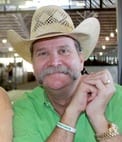 APHA Show Manager Kevin Smith–I am very much in favor of combination for many reasons; one is the ability for all riders to show for more total points [both APHA and club]. Over the past several years, we have seen our Texas club shows lose exhibitors to out of state shows due to the size of the classes. The ability of a club to sponsor a show and cover costs is directly related to the number of entries. If we can draw more entires, we can host better shows–fairly basic math. Bottom line is that we need to hold our zone exhibitors and create a platform for them to earn top 20 points as well as compete on a higher level to prepare for shows like the World. This cannot happen with 3, 4, 5, 6 exhibitors. We also break out the 13 and under and 14-18, as well as the Classic and Masters Amateur for separate High point awards at the show. thus far we have not had issue finding the winners.
APHA Show Manager Kevin Smith–I am very much in favor of combination for many reasons; one is the ability for all riders to show for more total points [both APHA and club]. Over the past several years, we have seen our Texas club shows lose exhibitors to out of state shows due to the size of the classes. The ability of a club to sponsor a show and cover costs is directly related to the number of entries. If we can draw more entires, we can host better shows–fairly basic math. Bottom line is that we need to hold our zone exhibitors and create a platform for them to earn top 20 points as well as compete on a higher level to prepare for shows like the World. This cannot happen with 3, 4, 5, 6 exhibitors. We also break out the 13 and under and 14-18, as well as the Classic and Masters Amateur for separate High point awards at the show. thus far we have not had issue finding the winners.
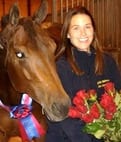 APHA Amateur Elizabeth Spike Brewer–That is an interesting topic because we are seeing so many clubs with the split struggle for youth and amateur.
APHA Amateur Elizabeth Spike Brewer–That is an interesting topic because we are seeing so many clubs with the split struggle for youth and amateur.
My personal opinion is that given the economic climate our country is in, combining the youth and amateur makes more sense for the overall efficiency of the show. People are spending record amounts of money for what a lot of people is a hobby, so getting the most bang for our buck seems to make perfect sense. Who wants to haul 100 miles, have the fuel, stall, show, motel expenses and then get to the show and only have 3 in their youth or amateur class and earn maybe 5 points at a show? We would rather risk having the tougher competion in an all age classes verses splitting it and not making it worth anyone’s time.
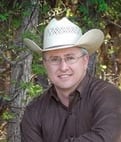 APHA Trainer and Judge Garth Gooding–It’s about caring about the future of the APHA. In my travels, both showing and judging, you often hear people talking negatively about the size of a show, when so often the numbers aren’t that bad but it’s the structure of the show creating the negative impression.
APHA Trainer and Judge Garth Gooding–It’s about caring about the future of the APHA. In my travels, both showing and judging, you often hear people talking negatively about the size of a show, when so often the numbers aren’t that bad but it’s the structure of the show creating the negative impression.
It’s all about attracting new blood into our industry. If potential newcomers attend a show and there are 5-10 horses in the classes or they check out a show that has 15-20 in the classes, where would you want to go?
I get the little kid showing against the big kid thing but more often than not I think it’s the parents that have a problem with it not the children. If these children would be allowed to pay their dues and put the emphasis on learning to become better horseman rather than winning, they would be much better horseman on down the road. The walk-trot and novice classes also serve us well regarding this. Maybe our walk-trot age should go back to 11 and under?
One other thought, I originally thought it may benefit APHA to have a rule that stated if either amateur class dropped below 9 entries they would automatically be combined, however, after talking with several people I feel a better option may be to offer an all age amateur class and then a 45 and over or maybe a 50 and over much like Quarter Horse’s Select system and the older group could choose one or the other.
 Secretary for the Northern Michigan Paint Horse Club Emily White-Ream–We have combined the Amateur back together in Michigan, except for the Showmanship and Western Pleasure. There are a lot of people that agree with combining, but there are those who don’t feel this way. Most of those people are the the ones with young 13 & under kids. If we combine and that draws more kids, most likely they are older kids, which is fine – but what happens if we always combine and end up discouraging the young kids from showing APHA? I believe the children are our future..APHA is intimidating for a lot of people to jump into. Most people I try to talk to about showing APHA say there is no way they can compete at that level, which is most times not true. I just don’t feel it would encourage new members to join us if we combine and make it that much more intimidating.
Secretary for the Northern Michigan Paint Horse Club Emily White-Ream–We have combined the Amateur back together in Michigan, except for the Showmanship and Western Pleasure. There are a lot of people that agree with combining, but there are those who don’t feel this way. Most of those people are the the ones with young 13 & under kids. If we combine and that draws more kids, most likely they are older kids, which is fine – but what happens if we always combine and end up discouraging the young kids from showing APHA? I believe the children are our future..APHA is intimidating for a lot of people to jump into. Most people I try to talk to about showing APHA say there is no way they can compete at that level, which is most times not true. I just don’t feel it would encourage new members to join us if we combine and make it that much more intimidating.




